Innovations to improve healthcare access and end tuberculosis
Harnessing artificial intelligence for health
March 26, 2024
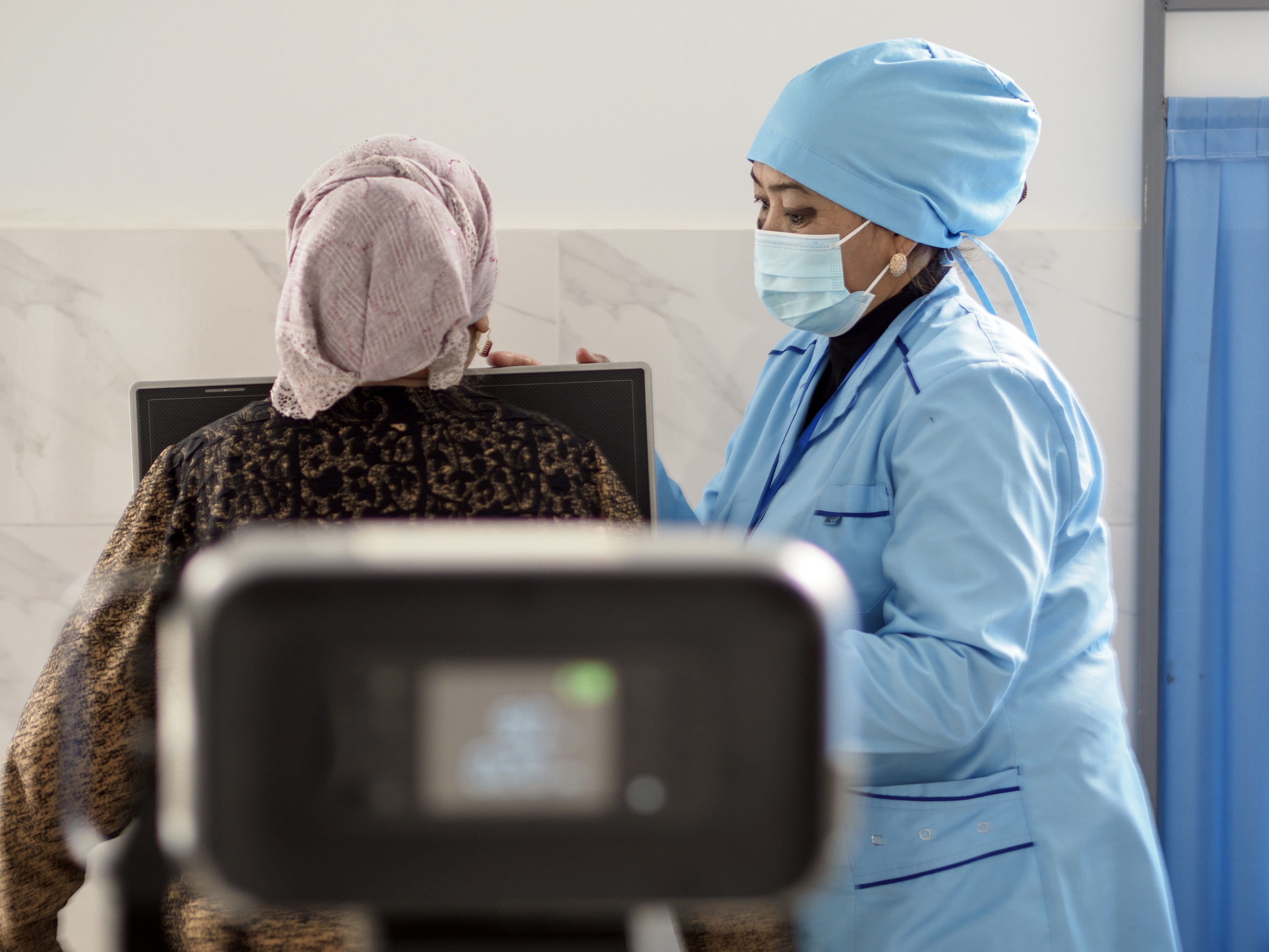
Artificial intelligence and battery-powered portable X-ray machines are helping to expand access to tuberculosis testing and treatment.
“Artificial intelligence screens for TB more accurately, leading to improved treatment for patients. The portable X-ray makes things easier for doctors and patients and plays an important role in TB response,” said Dr. Saidsharif Haydarov, a tuberculosis specialist in Rudaki, Tajikistan.
The automated technology helps Dr. Haydarov interpret chest X-ray images and see if people have tuberculosis (TB), a potentially fatal infectious disease that mostly affects the lungs. If anomalies are found in the images, patients undergo additional testing to confirm their diagnosis and receive appropriate treatment.
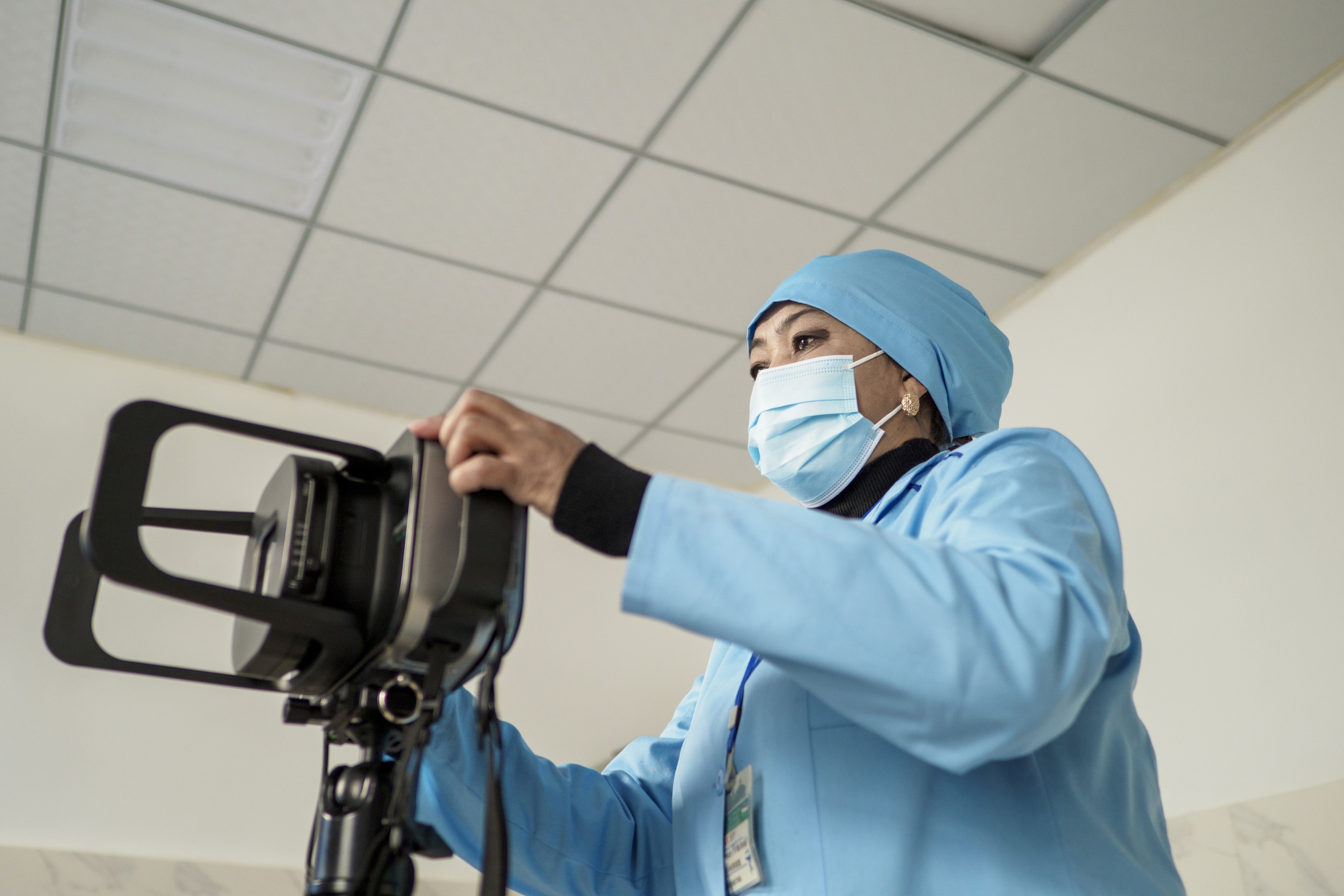
Automated technology helps doctors interpret chest X-ray images so they can refer patients for further testing and appropriate treatment.
Chest X-rays are a common method of screening and triaging people for TB and assessing their lung damage. With artificial intelligence (AI), results are more precise and ready in a couple of minutes, allowing health workers to quickly determine the next steps for TB care, even in remote areas without a radiology expert.
“Not everyone can read and interpret an X-ray report. AI helps highlight potential TB infection. If there is no radiologist, any doctor can see that there is a problem here,” said Dr. Ofere Ohide, a radiologist at Torit State Hospital, South Sudan.

Battery-powered X-ray machines are a game changer in South Sudan and other countries that lack reliable electricity. The smaller machines can also be transported to remote areas to reach patients who might otherwise delay testing and treatment until their condition worsens.
Benefits beyond AI
Combined with the benefits of AI, these new battery-powered X-ray machines are also small and light enough to transport by hand. Traditional X-ray machines are stationary and operate on local electric grids. Like many low- and middle-income countries, where most TB cases are found, electricity is unreliable in South Sudan and Tajikistan.
“Power supply is a big challenge in Torit. But this is not a conventional X-ray. You can charge a battery and use it multiple times on a single charge. As it’s quite portable, you can go to a community, conduct X-rays and come back,” Ohide added.
Portability reduces the cost of travelling to health centres for rural patients, who may otherwise delay TB testing until their health worsens. AI-assisted X-rays could potentially detect other health problems, such as COVID-19, to further strengthen national diagnostic capacities alongside GeneXpert machines and laboratories.

Complementing other testing methods, new technologies are supporting the global recovery from a resurgence of TB.
Closing the testing gap
Digital X-ray technology is closing the digital divide and complementing other TB testing methods to support the global recovery from a resurgence of TB. At the height of the COVID-19 pandemic, the number of people with TB increased by 3.9 percent, reversing declines of about 2 percent per year for most of the past two decades. In 2022, 7.5 million people were newly diagnosed with TB, the highest number ever recorded globally.
More than a quarter of all people with TB in Tajikistan in 2022 had a strain that is resistant to rifampicin, one of the most powerful anti-TB medicines. The country is one of 18 high-priority countries for TB in the World Health Organization European Region and one of 30 high-burden countries worldwide with multidrug-resistant TB. Despite decreases in cases and deaths in recent years in Tajikistan, of the estimated 7,800 people with TB in 2022, little over half were officially reported. That means thousands of people never received services.
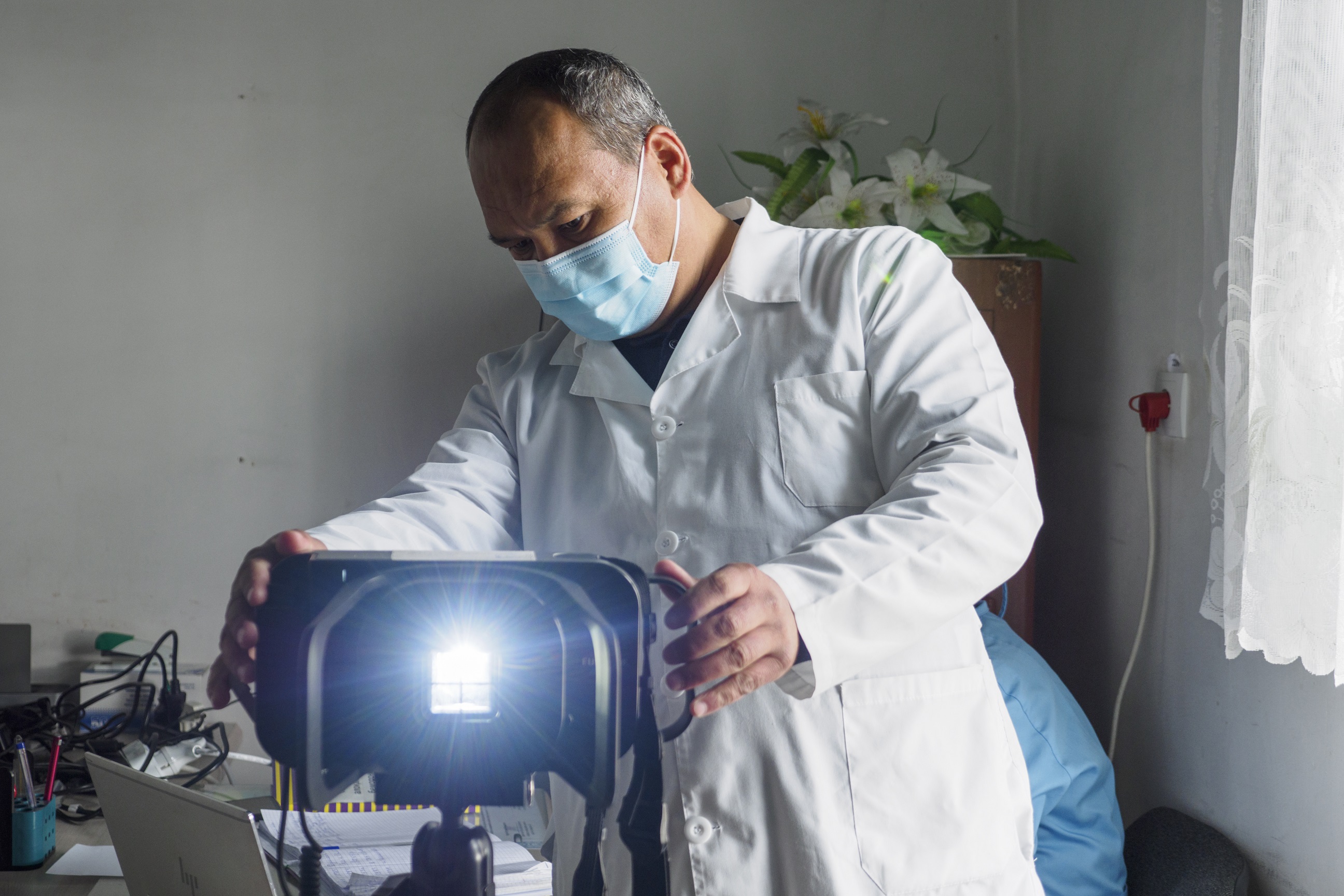
Globally some 7.5 million people were newly diagnosed with TB in 2022, the highest number ever recorded.
With support from the Global Fund to Fight AIDS, Tuberculosis and Malaria, the National TB Programme (NTP) and UNDP partnered to enhance TB detection in Tajikistan using 15 AI-assisted X-rays to screen people most at risk of TB, including migrants, people with HIV and people in prisons. The Stop TB Partnership and United States Agency for International Development provided additional machines.
The digital X-rays were used to screen nearly 120,000 people for TB in 2023, which led to the diagnosis and treatment of 15 percent of the country’s total number of reported cases last year. UNDP and the Global Fund will deliver another 18 machines to scale up screening through the NTP.
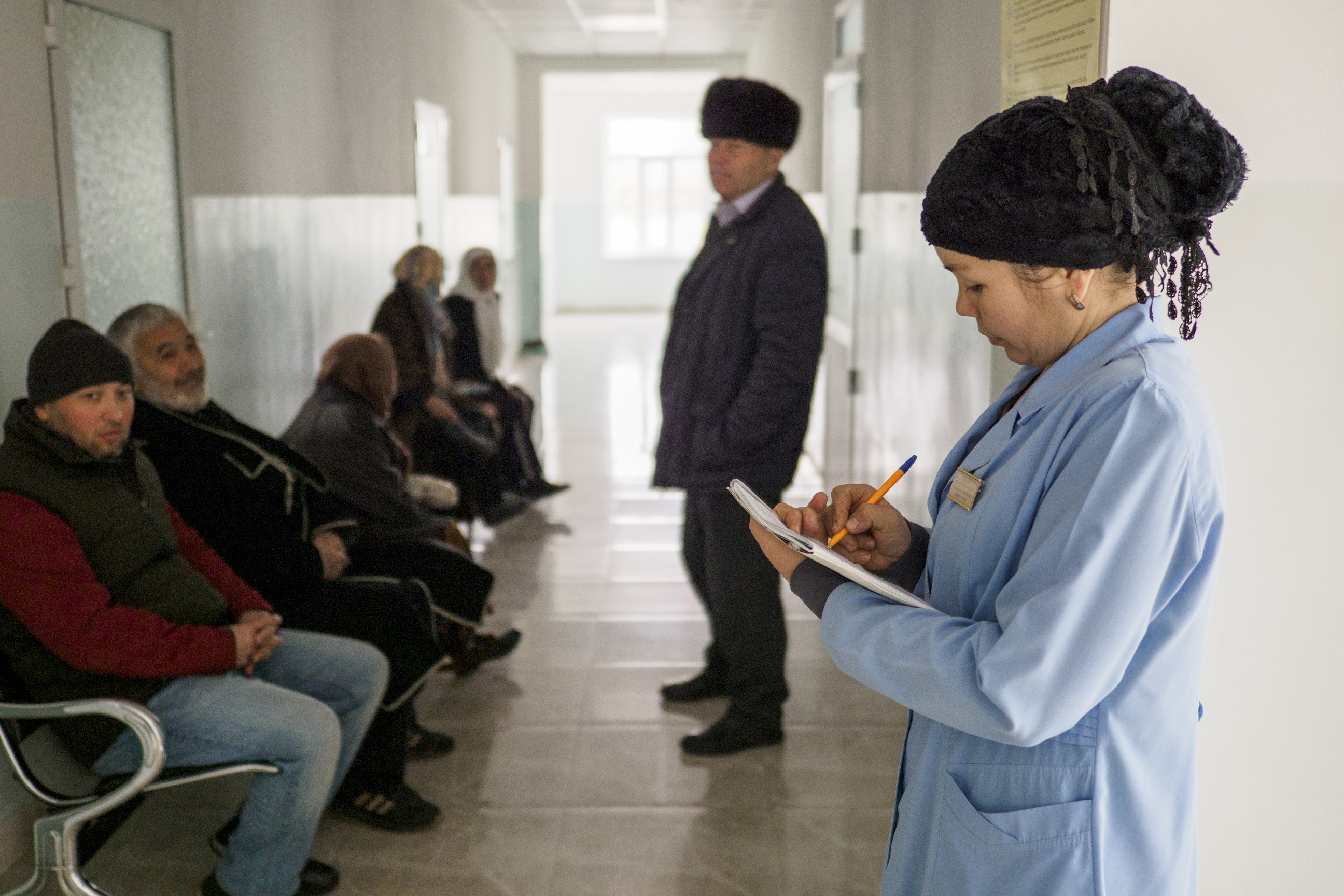
Working with the Global Fund to Fight AIDS, Tuberculosis and Malaria, the United States Agency for International Development and other partners, UNDP is helping countries enhance TB detection and services.
In South Sudan, the Ministry of Health, the Global Fund and UNDP delivered two digital X-rays to state hospitals in December 2023, with another four to be installed in March 2024. Initial results are promising: 10 people with TB have been identified in Torit so far, as the ministry assesses the use of new technologies to help find and treat the country’s estimated 25,000 cases per year.
Alfeo Obusuk, a laboratory technician at Torit State Hospital, was one such patient. Obusuk had a persistent cough for two years, during which he received pneumonia treatment after microscopy and GeneXpert tests did not detect TB. When Obusuk took a digital X-ray in January, doctors found a possible TB infection, which may have been missed earlier due to an inadequate sputum sample. After a second GeneXpert test confirmed his diagnosis, Obusuk started TB treatment the same day.
“I was tested with the digital X-ray machine. It was positive and I was scared. I am still in the initial phase of the treatment, but I have already noticed some changes. I am now okay,” said Obusuk.
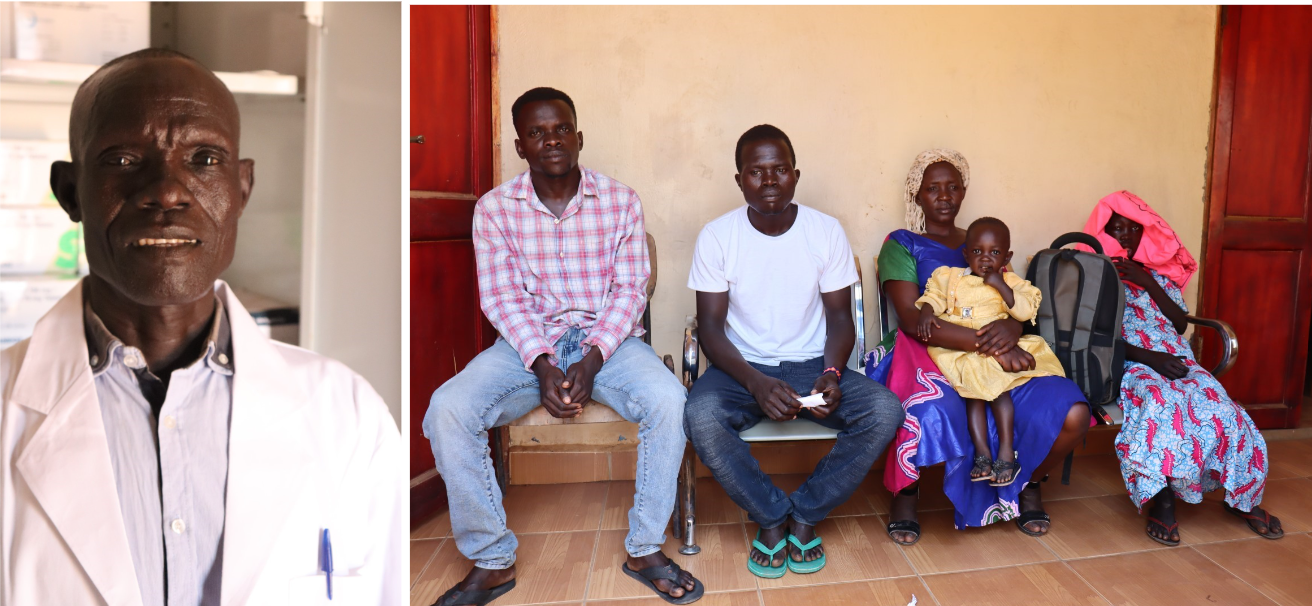
With six years to go to the 2030 deadline, technology and innovation are helping to advance progress on Sustainable Development Goal 3 on good health and well-being.
With just six years left to achieve the 2030 Agenda, progress against TB has been hampered by COVID-19 and remains insufficient. Globally, an estimated 3.1 million people were undiagnosed and untreated for TB in 2022. US$13 billion is needed annually to expand TB prevention, testing and treatment, including equitable access to digital solutions and AI innovations, and reach targets set in the 2023 UN Political Declaration on TB.
The theme for World TB Day 2023, “Yes! We can end TB!”, is a message of hope and a call for high-level commitment and tangible action. UNDP joins this call to turn the tide against the TB epidemic and accelerate action to achieve the good health needed to sustain development and leave no one behind.

 Locations
Locations


